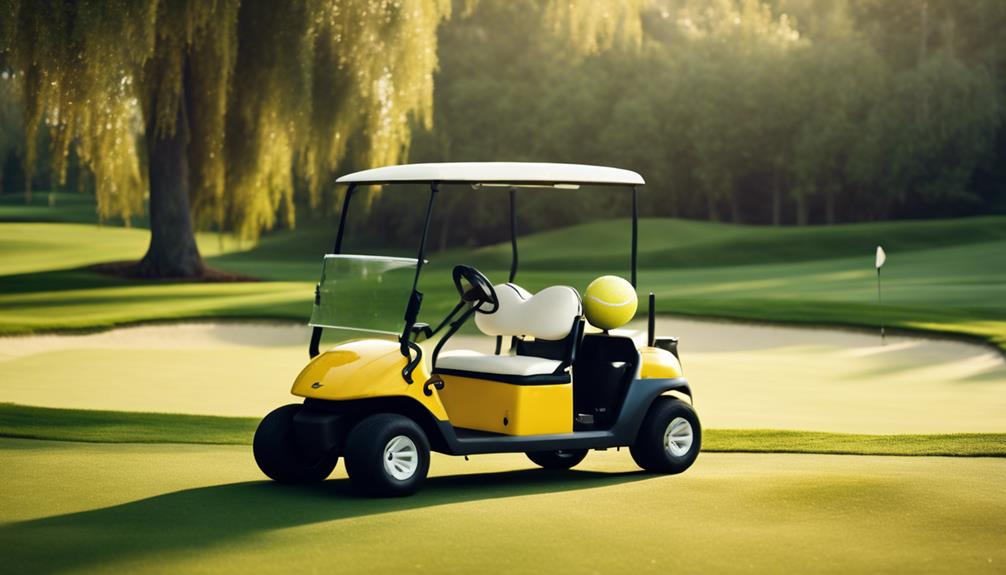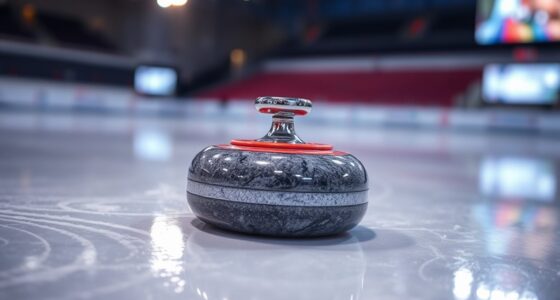As you step onto the golf course, you're likely to notice a forecaddie tracking balls, maintaining pace of play, and ensuring a smooth game flow. Governed by specific Rules of Golf, forecaddies move or deflect balls without penalty, and their expertise in tracking ball positions saves time and reduces errors. By using flags to indicate ball positions, they assist in fair play and provide valuable insights to enhance your performance. From calculating exact yardages to providing guidance on course layout, a forecaddie's role is essential to your game. Learn more about how a forecaddie can elevate your golfing experience.
Key Takeaways
- A forecaddie tracks balls on the course, maintains pace of play, and helps locate and identify balls without penalty.
- They use flags to indicate ball positions, expertise in tracking ball positions, and saves time in locating balls.
- Forecaddies provide valuable insights and support, help in club selections and putting, and reduce errors on the green.
- They have intimate knowledge of the course layout, providing guidance on hazards, distances, and out-of-bound markers.
- Forecaddies accurately calculate yardages for precise shots, offering valuable guidance on course layout and approach to each hole.
What Is a Forecaddie
As you step onto the golf course, you might notice an essential figure assisting players, and that's where a forecaddie comes in – an outside agent responsible for tracking balls and maintaining pace of play. A forecaddie plays a crucial role in ensuring a smooth and efficient game, allowing you to focus on your swing.
Their primary responsibility is to keep track of all golf balls in play, helping you locate and identify your ball on the course. In situations where your ball lands in rough or out of sight, a forecaddie can move or deflect the ball without penalty, saving you time and hassle. By using flags to indicate ball positions, they help you quickly locate your ball, maintaining pace of play.
Essentially, a forecaddie is a valuable asset on the course, allowing you to enjoy a more streamlined and enjoyable golfing experience.
Forecaddie in the Rules
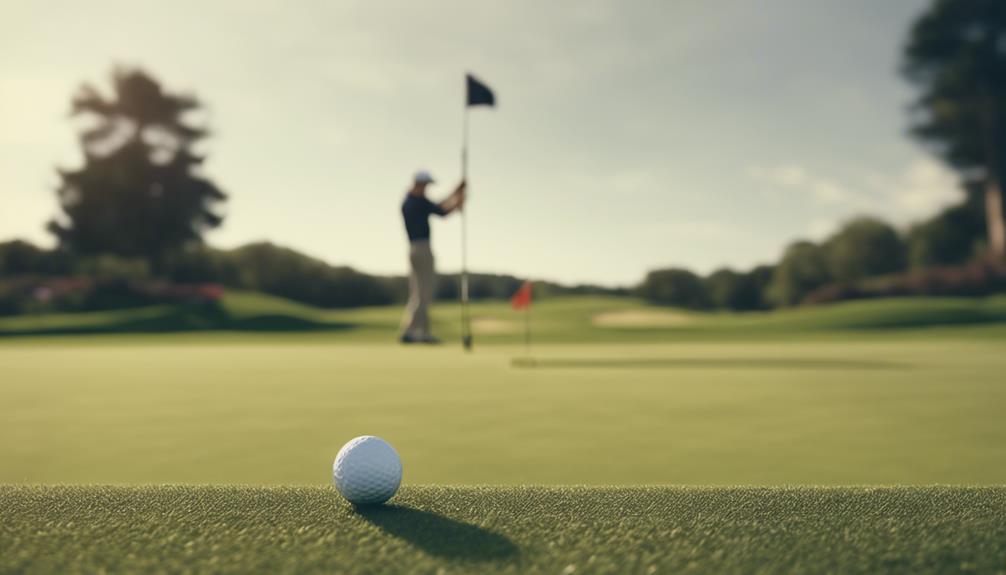
Your forecaddie's actions on the course are governed by specific rules, and understanding these rules can help you navigate situations involving your forecaddie. As an outside agency, a forecaddie's actions are subject to the Rules of Golf.
| Rule | Description |
|---|---|
| 18-1 | Replacing a ball moved by a forecaddie |
| 19-1 | Exceptions to rub of the green |
| Rub of the green | Deflection of a ball in motion by a forecaddie |
In the event of a forecaddie moving a ball, there is no penalty incurred by the player. If a forecaddie deflects a ball in motion, it is considered a rub of the green situation, with exceptions outlined in Rule 19-1. When a forecaddie moves a ball during play, Rule 18-1 governs the process of replacing the ball. Understanding these rules can help you avoid confusion and disputes on the course. As a golfer, it's essential to be aware of a forecaddie's job and how it interacts with the Rules of Golf.
Duties of the Forecaddie
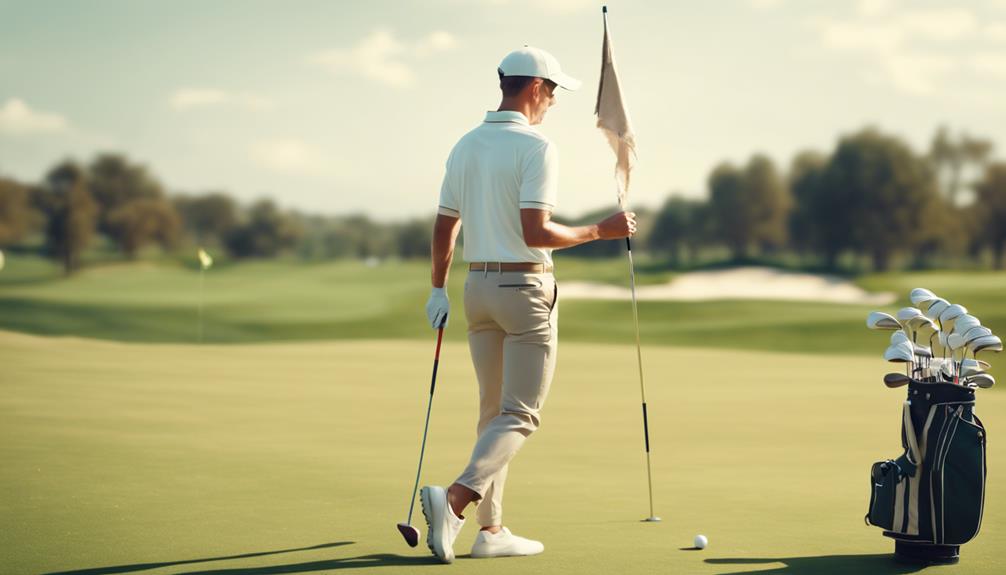
By having a forecaddie on the course, you'll benefit from their expertise in tracking your ball's position, saving you time and effort in locating it, especially in tricky areas.
As you play, your forecaddie will keep a close eye on all golf balls in play, ensuring that you can quickly find your ball even in difficult areas like rough or blind spots on the course. This not only saves you time but also helps maintain the pace of play, eliminating wasted time spent searching for lost balls.
In tournaments, forecaddies use flags to indicate ball positions, making it even easier for you to locate your shots. Their primary responsibility is to track balls hit into difficult areas, and they play a crucial role in ensuring fair play by assisting in locating and identifying golf balls during a round.
Role in Enhancing Performance
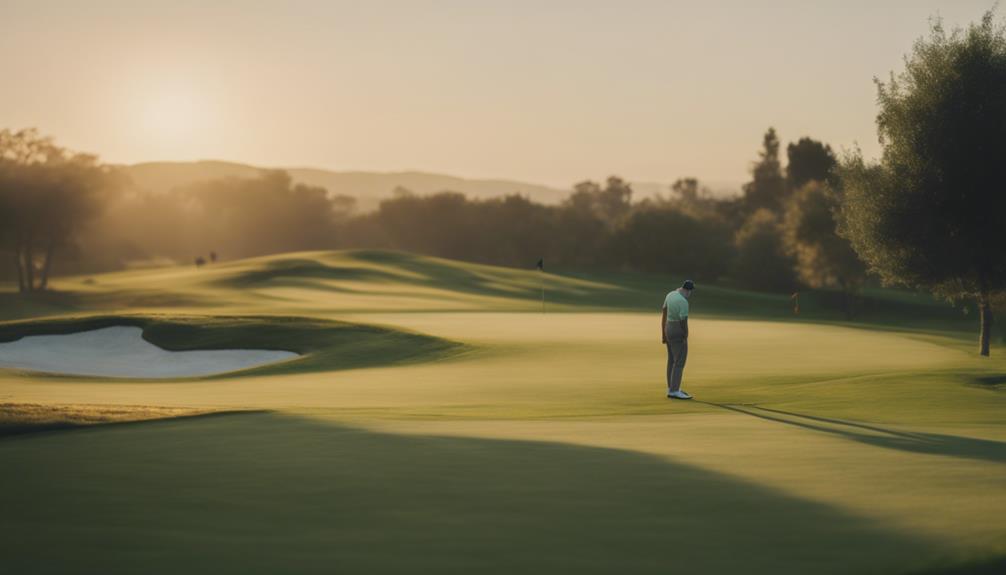
Having a forecaddie on your team can greatly enhance your game, as they provide valuable insights and support to help you make better club selections, improve your putting, and reduce errors on the green. By accurately measuring yardages, forecaddies empower golfers to make informed club selections, leading to more precise shots and improved overall performance.
Moreover, their expertise in course knowledge and reading greens enables you to navigate the putting green with confidence, capitalizing on scoring opportunities. Additionally, forecaddies tend the pin, providing strategic advice to further enhance your putting skills.
Their presence also helps maintain the pace of play, ensuring a smooth and efficient round. As a result, golfers can focus on their game, knowing that their forecaddie is supporting them every step of the way. With their guidance, you can refine your skills, reduce errors, and ultimately, shoot lower scores.
Forecaddie Vs. Caddie
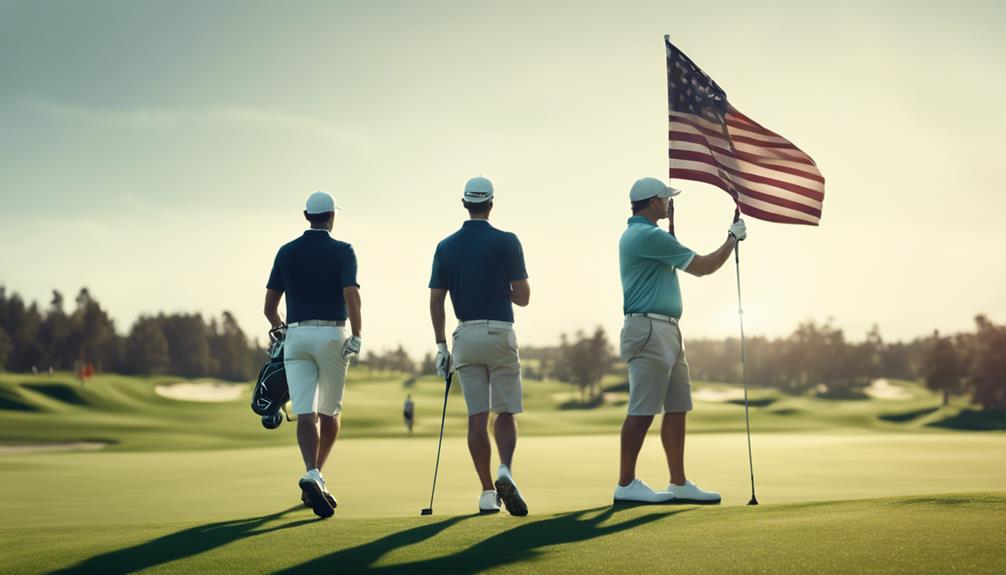
As you explore the differences between forecaddies and caddies, you'll notice that their key responsibilities, primary focus areas, and unique skill sets set them apart.
While both roles aim to enhance your golfing experience, they cater to distinct needs – forecaddies specialize in tracking balls and maintaining pace, whereas caddies offer a broader range of services.
Key Responsibilities Differ
When you're on the course, you might assume that a forecaddie and a traditional caddie are interchangeable terms, but they've distinct roles that set them apart. While both play essential roles in enhancing the overall golfing experience, their key responsibilities differ greatly. As a golfer, understanding these differences can help you maximize the benefits of having a forecaddie or caddie by your side.
A forecaddie's primary focus is on finding golf balls that hit challenging areas, using red flag markers to indicate ball positions for the group. They move efficiently ahead of the players, signaling ball locations and assisting with pace of play. Unlike caddies, forecaddies don't carry clubs, instead focusing on tracking balls, communicating back to players, and maintaining a smooth game flow.
When a ball hits a challenging spot, a forecaddie moves quickly to locate it, allowing you to focus on your game. By assisting golfers in this way, forecaddies help maintain a smooth pace of play, ensuring a more enjoyable experience for everyone on the course.
Primary Focus Areas
You'll quickly notice that forecaddies and caddies have distinct primary focus areas, with forecaddies concentrating on efficient ball tracking and pace management, while caddies explore further into gameplay strategy and personalized support.
As a golfer, you'll appreciate the specific skills each role brings to the course. Forecaddies excel in locating golf balls, using red flag markers to indicate their positions and facilitate efficient ball tracking. Their primary objective is to maintain a steady game pace, ensuring that your game flows smoothly.
In contrast, caddies delve deeper into the game, offering advice on club selection, strategy, and emotional support. While both roles are essential to enhancing your golfing experience, their primary focus areas differ significantly. Forecaddies specialize in ball tracking and signaling, whereas caddies are more involved in the overall gameplay and decision-making process.
Unique Skill Sets
With distinct primary focus areas established, the unique skill sets of forecaddies and caddies come into sharper focus, highlighting the specialized strengths each brings to the golfing experience.
As you explore the differences between these roles, you'll notice that forecaddies excel at locating golf balls and maintaining game pace on the course. They expertly use flags to indicate ball positions, ensuring efficient tracking.
On the other hand, caddies provide personalized services, offering club selection advice and emotional support to golfers. Their broader range of responsibilities includes equipment maintenance and rule understanding, making them an important part of the game.
While forecaddies focus on the logistics of the game, caddies focus on the player's experience. Both roles are vital, and their unique skill sets enhance the overall golfing experience.
As you navigate the course, you'll appreciate the important role these professionals play in ensuring a smooth and enjoyable game.
On Course Responsibilities
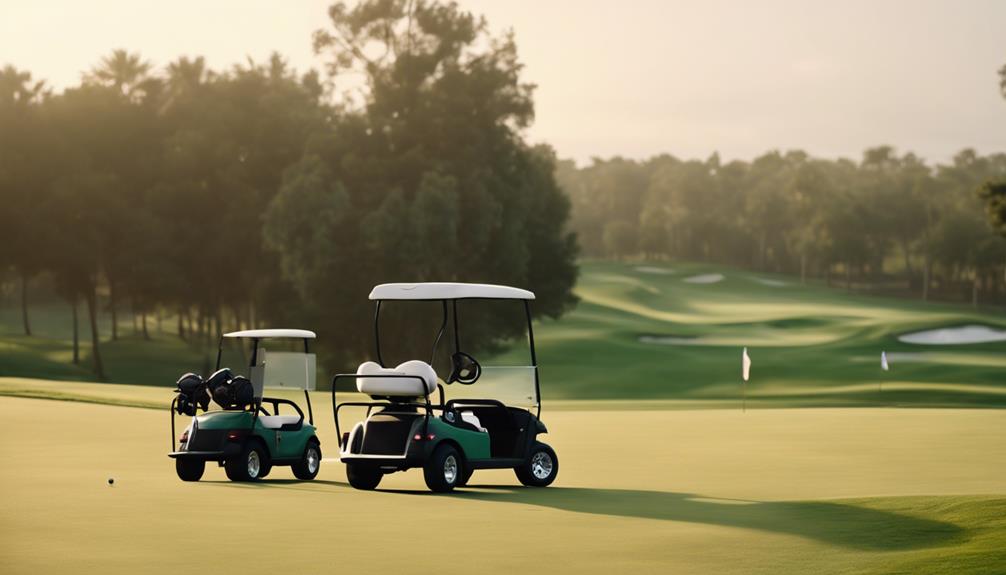
As you navigate the course, forecaddies take center stage, working diligently to locate balls that have veered off the fairway or landed in tricky areas. Their primary focus is on tracking balls, using their expertise to quickly identify the location of wayward shots.
This allows you to focus on your game, rather than wasting time searching for golf ball marks in the rough or dense vegetation. By assisting in the location of balls, forecaddies play an essential role in maintaining the pace of play, ensuring that your round of golf progresses smoothly and efficiently.
To aid in this process, they may use red flag markers to indicate the position of golf balls, providing you with a clear visual guide. By communicating the location of balls back to you, forecaddies help you manage your game, making informed decisions about your next shot.
Their on-course responsibilities are vital to a successful and enjoyable round of golf.
Supporting the Golfer
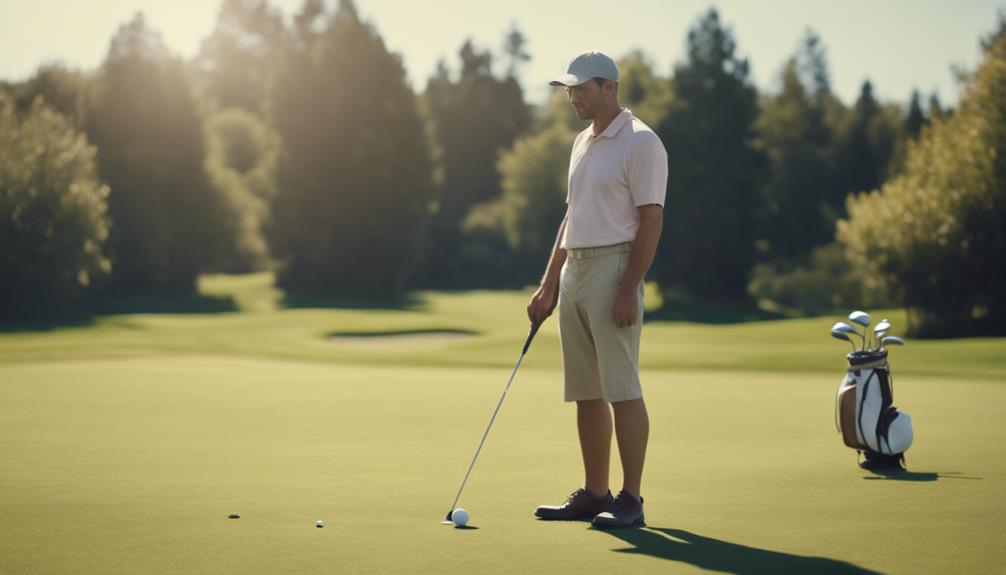
As you learn more about the role of a forecaddie, you'll discover that supporting the golfer is a critical aspect of their job.
This involves providing you with essential guidance on the course, accurately spotting your ball in tricky areas, and calculating exact yardages to guarantee precise shots.
Course Knowledge Guidance
You'll greatly benefit from your forecaddie's intimate knowledge of the course, which includes the layout of hazards, distances, and out-of-bound markers. This expertise enables them to provide you with valuable guidance on traversing the golf course.
With a deep understanding of the course layout, your forecaddie can advise on the best approach to each hole, taking into account your skill level and playing style. They'll help you make informed club selections by offering tailored advice on distances and hazards.
Using distance markers and rangefinders, your forecaddie can accurately calculate distances, ensuring you make strategic decisions. This wealth of knowledge allows you to focus on your game, rather than worrying about the intricacies of the course.
Ball Spotting Assistance
Your forecaddie's expertise shines when it comes to spotting and tracking balls hit into challenging areas of the course, saving you time and frustration. With their keen eyes and knowledge of the terrain, they can quickly locate your ball, even in dense rough or hidden hazards.
This ball spotting assistance is invaluable, as it allows you to focus on your game rather than spending precious minutes searching for your ball. Forecaddies may use red flag markers to indicate the position of your ball, making it easy for you to identify and play your next shot.
Yardage Calculation Help
With forecaddies expertly calculating yardages, you can trust that you're selecting the right club for each shot, giving you a strategic edge on the green. Accurate yardage calculation is essential in golf, and forecaddies play an important role in providing precise distances to help with club selection.
By using rangefinders and their extensive course knowledge, forecaddies can determine accurate distances, ensuring you're equipped with the right club for each shot.
Here are just a few ways forecaddies assist with yardage calculation:
- Providing precise yardage information to help you make informed club selections
- Helping you navigate challenging holes and obstacles with accurate distance measurements
- Giving you a strategic edge on the green by ensuring you're choosing the right club for each shot
With forecaddies handling yardage calculation, you can focus on your game, trusting that you've got the right club in hand.
Frequently Asked Questions
What Is the Role of a Forecaddie?
You're wondering what a forecaddie does? They're like a golfing assistant, tracking your balls, marking their spots, and keeping the game moving. They're not carrying your clubs, but they're helping you navigate the course, one lost ball at a time.
What's the Difference Between a Caddie and Forecaddie?
You're wondering what sets a caddie apart from a forecaddie. Simply put, a caddie provides personalized services like club selection and emotional support, while a forecaddie focuses on tracking golf balls and maintaining pace of play.
How to Be a Good Forecaddie?
As you step onto the green, coincidence has it that you're about to discover the secret to becoming an exceptional forecaddie – by mastering course knowledge, communication, pace, emotional support, and attention to detail, you'll excel in this crucial role!
Does a Forecaddie Carry a Bag?
You're wondering if a forecaddie carries a bag – the answer is no, they don't. Unlike traditional caddies, forecaddies focus on tracking golf balls and providing assistance, not lugging around heavy bags all day.
Conclusion
As you walk off the course, you can't help but think that your forecaddie's expertise played a significant role in your impressive score. Coincidence or not, their meticulous attention to detail and in-depth knowledge of the course unquestionably gave you an edge.
By now, you've come to appreciate the crucial role a forecaddie plays in enhancing your performance. As you reflect on your game, you realize that a forecaddie is more than just an extra pair of eyes – they're a trusted ally on the green.

